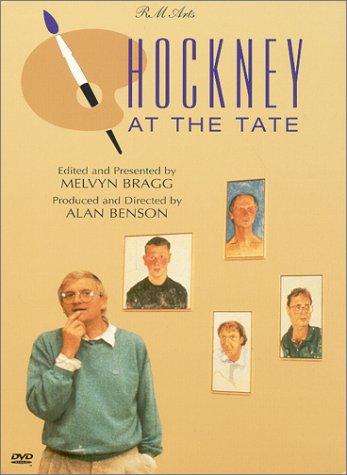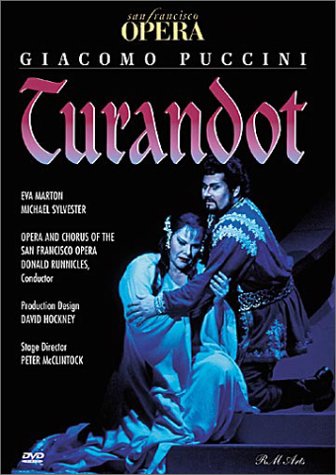 |
|
DVD
David
Hockney at the Tate
Since he burst upon the art scene in
the middle of the Sixties, David Hockney has been on of Britain's
most successful painters. To mark the artist's 50th birthday
in 1988, London's Tate Gallery staged a major retrospective
of Hockney's work. "David Hockeny at the Tate" was prepared
for the BBC's South Bank" show and features a walk-through interview
with the artist conducted by Melvyn Bragg. So often we are disappointed
when we hear an artist/writer/actor/musician talk about their
work. That is not a problem with this effort as Hockney talks
about the inspiration behind several of his major works such
as "Portrait of My Father," "Mulholland Drive" and "We Two Boys
Together, Clinging." One of the best parts of this 55 minute
program is when the artist explains how he constructs his composite
photographs, as in "A Visit with Christopher and Don." There
are certainly gaps in terms of covering particular aspects of
Hockney's career, but this is due more to the limitations of
Tate's collection than omissions by Hockney or Bragg. I think
this program is superior to "David Hockney: Portrait of an Artist,"
made five years earlier in the artist's London studio. This
is the one I would recommend for showing to art students who
will be fascinated to learn the thinking of one of the last
century's greatest artists.
|
 |
San
Francisco Opera
When this production premiered in 1992
in Chicago, many comparisons were made between it and the Metropolitan
Opera Zeffirelli production. In my opinion Mr. Hockney's production
comes up second to Zeffirelli's, however it has many merits
and many of them are emphasized on this beautifully reproduced
DVD. Visually, because of the intense greens, blues and reds,
the DVD is a knockout. Your television will never have looked
better. Hockney goes for a less realistic, more story-book quality
in his sets and costumes which is appropriate, since Turandot
is a fairy-tale of sorts. The colors and detail are far superior
to the Laserdisc edition with less "video noise" in the backgrounds
and more clarity of definition and detail. Vocally, Eva Marton
is not in as fresh voice as she was in the 1987 telecast from
the Met or the 1992 Chicago premier. However, her performance
vocally and dramatically is so intense and powerful that occasional
vocal lapses scarcely seem to matter. Michael Sylvester does
not have the vocal allure or richness of a Domingo or a Pavarotti,
but he sings solidly and with a secure ending to "Nessun Dorma".
Kevin Langan is wonderful and moving as Timur with make-up that
certainly hides his true age. The vocal stand-out of this performance
is Lucia Mazzaria. She sounds in many spots like a young Freni,
with total mastery of color and style. Her two arias in Act
III are worthy of many repeat viewings. The chorus is acceptable
and for the most part accurate, but somewhat lacking in darkness
and richness of color in the Italian "La Scala" style. David
Runnicles' conducting is appealing if not revealing. This video
is highly recommended but when the Met version is released you
will want to own it as well for it's lavish and far more realistic
sets and costumes from the always unbeatable Franco Zeffirelli.
|